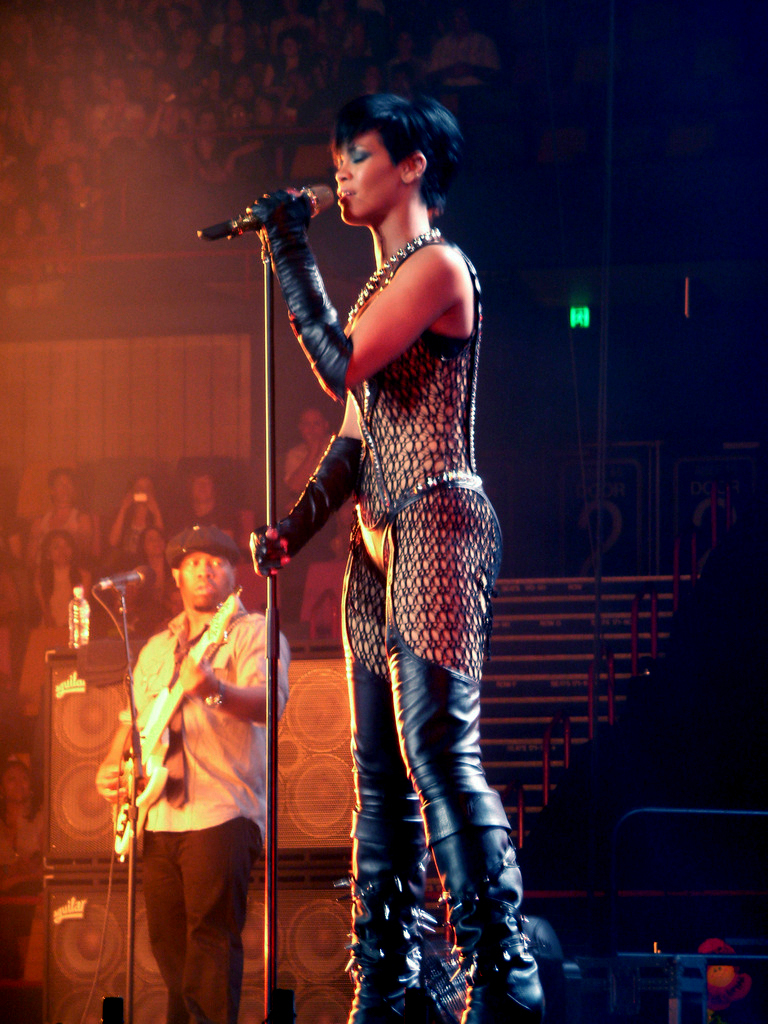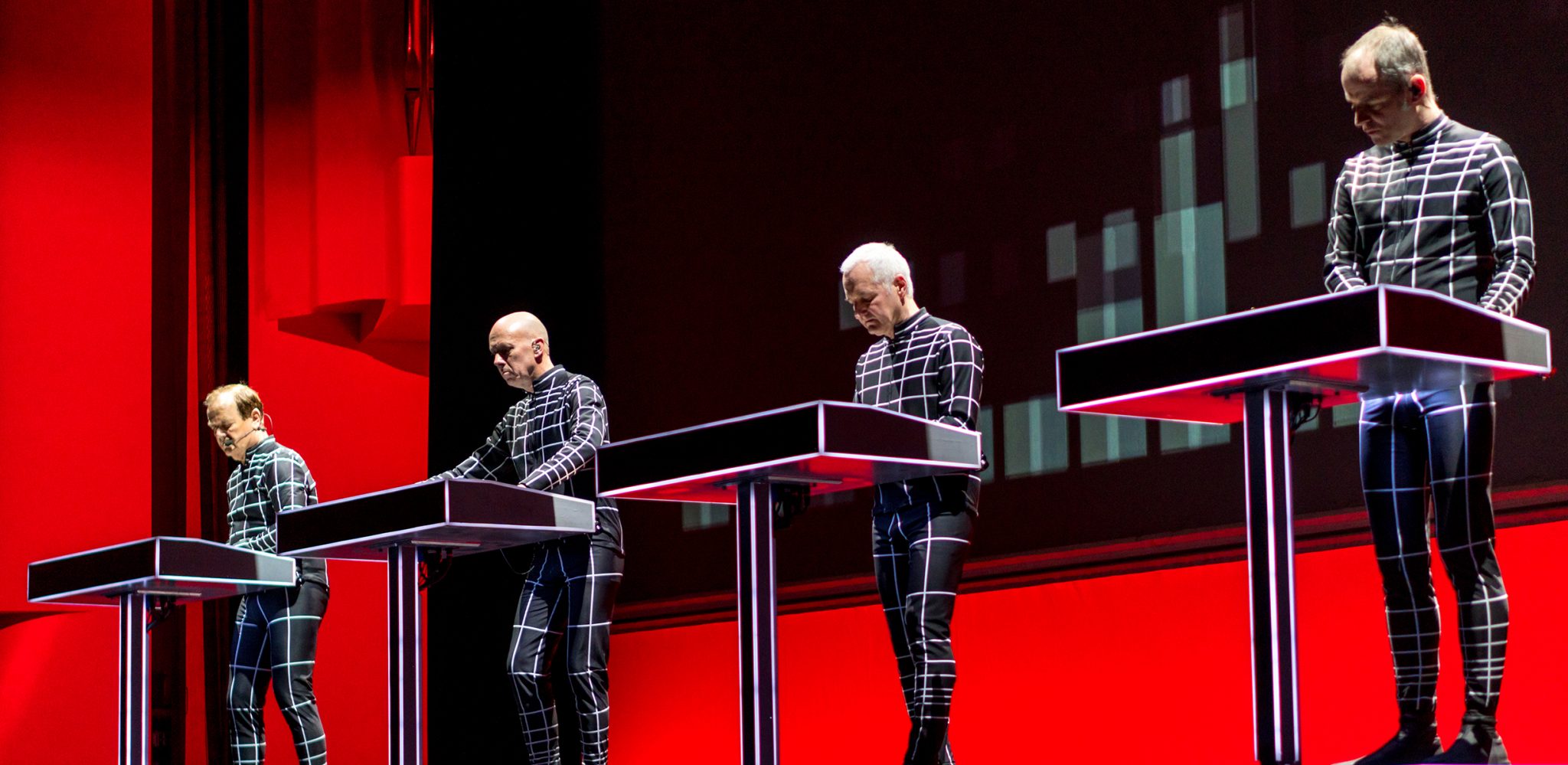Three books by European critical theorists seek to formulate a philosophy of pop music, by way of Rihanna, Fatima Al Qadiri and Kraftwerk
Agnès Gayraud, Dialectic of Pop, translated by Robin Mackay, Daniel Miller, Nina Power (Urbanomic)
Jörg Heiser, Double Lives in Art and Pop Music, translated by Nicholas Grindell (Sternberg Press)
Uwe Schütte, Kraftwerk: Future Music from Germany (Penguin)
‘Popular music’, sniffs Theodor Adorno in his 1941 essay on the subject, is inferior to ‘serious music’ because it distracts listeners from making the painful intellectual effort needed to see through the lies that cloak the structures of power. But Adorno wasn’t in Jamaica during the great sound clashes, nor at the first Can show in Cologne. He never cleared the queue at Berlin’s Berghain as the sun broke over the horizon or danced to Donna Summer’s I Feel Love (1977) at a suburban house party hosted by a perfect stranger. When it comes to his passing judgment on the liberating effects of pop music, he didn’t know what he was talking about.
While it’s tempting to state that the affective experience of pop music justifies itself, this is unlikely to pass muster in continental philosophy departments. Three books by European critical theorists on pop music – the term here divested of its bubblegum Anglosphere associations and encompassing everything from krautrock to hip-hop – attempt to square the circle. Their task is complicated by Europe’s ambivalent relationship to pop: recall the students in Jean-Luc Godard’s 1968 Sympathy for the Devil, who argue that rock ’n’ roll is a symptom of American cultural imperialism and bebop is the authentic expression of revolutionary consciousness (though, of course, Adorno hated jazz). Each book at some point addresses itself to the leader of the Frankfurt School, suggesting that those devoted to both Adorno’s Minima Moralia (1951) and Joy Division find it difficult to accept that the author of the former would have rolled his eyes at the latter.
Such hankering speaks to the conflicts underpinning any attempt to formulate a philosophy of pop music. The foremost of these is that subordinating the emotional experience of pop to the categories of critical theory risks domesticating it. Nothing is more likely to convince
me that the Sex Pistols were a distraction from revolution than being lectured about how revolutionary they were. The academicisation of pop might seem analogous to its commodification by the market, a means of dissecting it in order to illustrate a narrative or serve a reproducible commercial function. These are the paradoxes of which any theorist of pop who is also a fan must be aware.

Agnès Gayraud, a philosopher who also makes witty, Gainsbourgish chamber pop as La Féline, makes a virtue of these contradictions by turning Adorno’s method against him. Her brilliantly executed theory of what he dismissed as ‘standardised light popular music’ does not attempt to reconcile intellect and emotion but instead sets them up as antagonistic impulses that contribute to the ‘dialectic of pop’. The form is not compromised but instead enlivened by its manifold antitheses: between novelty and revivalism, authenticity and affectation, nihilism and utopianism, avant-garde ‘anti-pop’ and mainstream ‘pop’. The dialectic is negative per Adorno, because there is no promise of resolution; the coup de grâce is to demonstrate that these self-reflexive processes preserve pop’s autonomy by failing to map onto what Gayraud (who, it must be remembered, is French) calls ‘the Procrustean bed of rational progress’. Taking examples from Joe Meek to Rihanna, she makes a convincing argument that this restless back-and-forth generates the ‘hybridisations and transformations’ that keep pop music alive.
First published in German in 2015, Jörg Heiser’s Double Lives in Art and Pop Music traces a comparably dialectical relationship. Through chapters exploring modes of exchange between the two fields – collaborations (Yoko Ono and John Lennon), crossovers (Joseph Beuys’s regret- table foray into agit-pop) and dual competency (from Carsten Nicolai to Fatima Al Qadiri) – Heiser develops a theory in which ‘context switching’ between disciplines generates the energy on which both feed. His early warning against art or music’s retreat into its own specialisms is familiar, but Heiser is quick to challenge the assumption that ‘blurring boundaries’ is inherently good.
What elevates Heiser’s book is how this relationship between art and music serves as case study for a society in which boundaries – between creativity and labour, public and private, work and leisure – are also breaking down. While introducing dancers into a sculpture exhibition for no good reason not only infuriates anyone who likes either sculpture or dance, it is symptomatic of neoliberalism’s tendency towards the creation of a single, undifferentiated market for its commodities. Why appeal only to a sculpture audience if you can appeal to a dance audience? And a lifestyle audience, and an audience interested in ‘culture’…
In this model, the Romantic ideal of the gesamtkunstwerk is revealed as the formal expression of an exploitative society founded upon the merger of industries, deskilling and the erosion of workers’ rights. Rather than dissolving categories or erecting barriers between them, Heiser suggests we maintain a (fluctuating) separation between fields, then learn how to step between them. This not only prevents art and pop from being subsumed by the culture industry but might also help workers resist their own exploitation. All of which is wrapped up in a deeply engaging history of the encounters between art and pop, from The Velvet Underground to Michaela Melián.
Both Gayraud and Heiser devote considerable attention to Kraftwerk, which only highlights how little Uwe Schütte’s workmanlike biography of the band shares their anxieties around the assimilation and academicisation of pop music. It is replete with examples of ‘context switching’ – from a vision of Germany’s future drawn from prewar culture to the sly appropriation of avant-garde artistic strategies. Yet rather than interrogate these tensions, Schütte celebrates the ‘convergence’ of art and music, and, rather ominously, the seamless ‘fusion’ of man and machine. One is left wondering if the reconciliations he identifies and seems determined to accelerate – between art and music, museum and concert hall, pop and the academy – are an unqualified good.
Indeed, Kraftwerk’s recent performances at the world’s grandest museums might seem, in this light, to stray perilously close to the multimedia extravaganzas that inaugurate sporting or cultural events, and which Heiser identifies as the ultimate expression of the totalising tendencies of a hypernetworked capitalist society. The integration of different disciplines into one spectacular whole is also at odds with Gayraud’s agonistic and unstable system, suppressing the tensions that might generate new forms. These bland spectacles exemplify the forms of entertainment that Adorno warned would distract people from attending critically to the conditions of everyday life. Art and pop music, these books demonstrate, must remain open to external influences while resisting the blandness of ‘contemporary culture’ or the approval of the academy. But if you were dancing last night, you’ll know this already.
